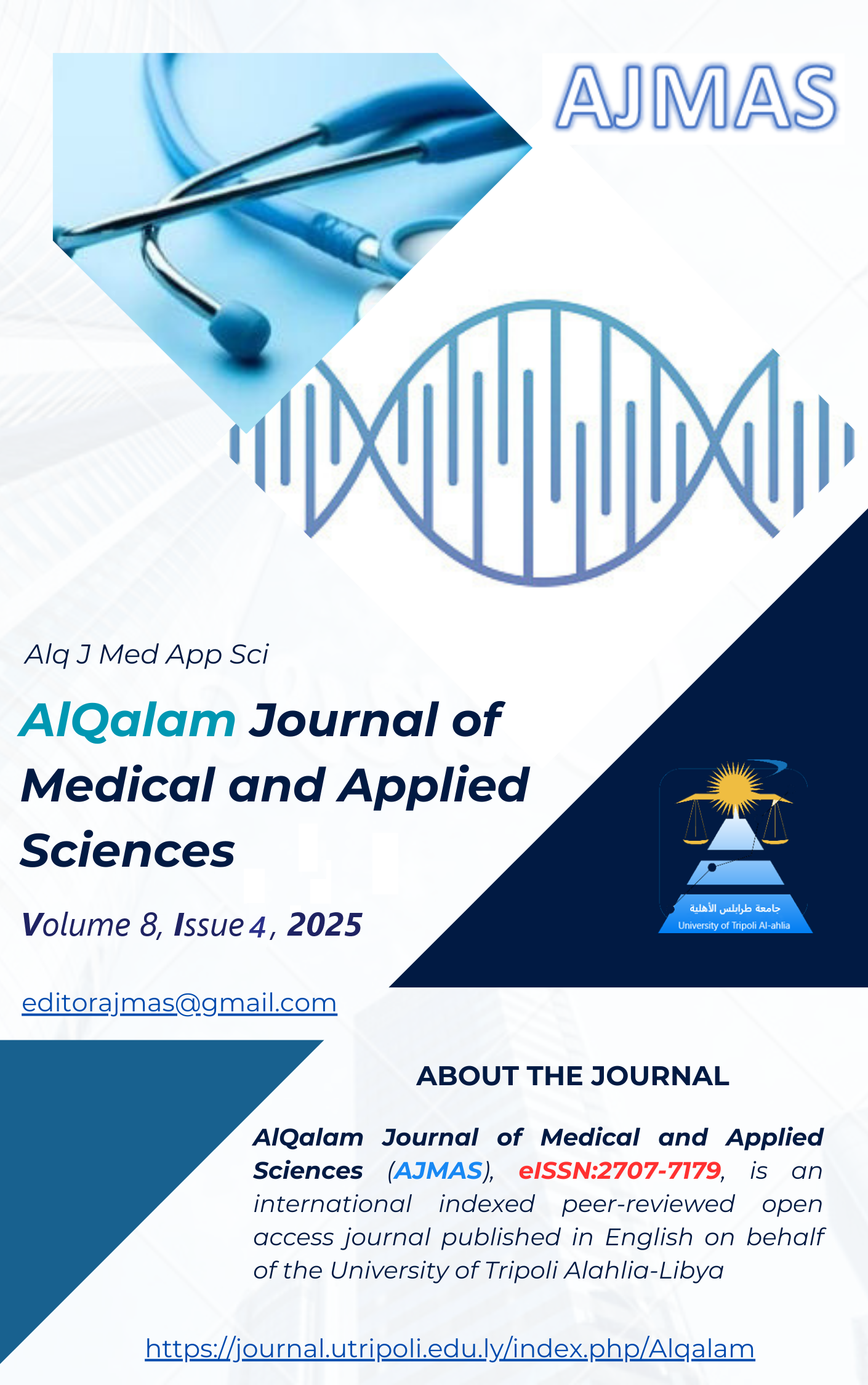Correlation Between Virulence Determinants and Multidrug Resistance in Pseudomonas aeruginosa Isolated from Healthcare-Associated Infections in Libya
DOI:
https://doi.org/10.54361/ajmas.258481Keywords:
Pseudomonas aeruginosa, Hospital-Acquired Infections, Virulence Factors, Multidrug Resistance, Biofilm.Abstract
Pseudomonas aeruginosa is a major cause of healthcare-associated infections, combining multidrug resistance (MDR) with virulence traits that complicate therapy, prolong hospitalization, and increase mortality. This study aimed to assess the prevalence of key virulence determinants and antimicrobial resistance in P. aeruginosa isolates from Libya, and to examine their associations. A total of 179 isolates were collected from urine, wound, respiratory, and blood samples from healthcare settings. Virulence factors (biofilm, hemolysin, protease, pyocyanin) were evaluated phenotypically. Antimicrobial susceptibility was tested by the Kirby–Bauer disk diffusion method following CLSI 2023 guidelines. Statistical tests determined associations between resistance and virulence. Biofilm was the most common virulence trait (72.6%; strong: 38.5%, moderate: 34.1%), followed by hemolysin (61.5%), protease (57.5%), and pyocyanin (48.0%). Resistance was highest to ceftazidime (69.3%), ciprofloxacin (62.6%), and gentamicin (58.1%), while colistin (92.7% susceptible) and meropenem (76.5% susceptible) remained most effective. Biofilm-producing isolates showed significantly higher resistance than non-producers (χ²=9.81, p=0.002, effect size=0.24). This study is the first in Libya to simultaneously link P. aeruginosa virulence with multidrug resistance (MDR). The coexistence of biofilm formation and resistance underscores its clinical importance in treatment failure and persistent infections. These findings highlight the urgent need to integrate virulence monitoring into antimicrobial resistance surveillance and to strengthen stewardship and infection-control programs in regional healthcare systems. Furthermore, incorporating virulence profiling into AMR surveillance may enhance infection control strategies and guide empirical therapy in Libyan hospitals.
Downloads
Published
How to Cite
Issue
Section
License
Copyright (c) 2025 Muhammad Elrahait, Amal Henaish, Mohanned Alwashaish

This work is licensed under a Creative Commons Attribution 4.0 International License.














